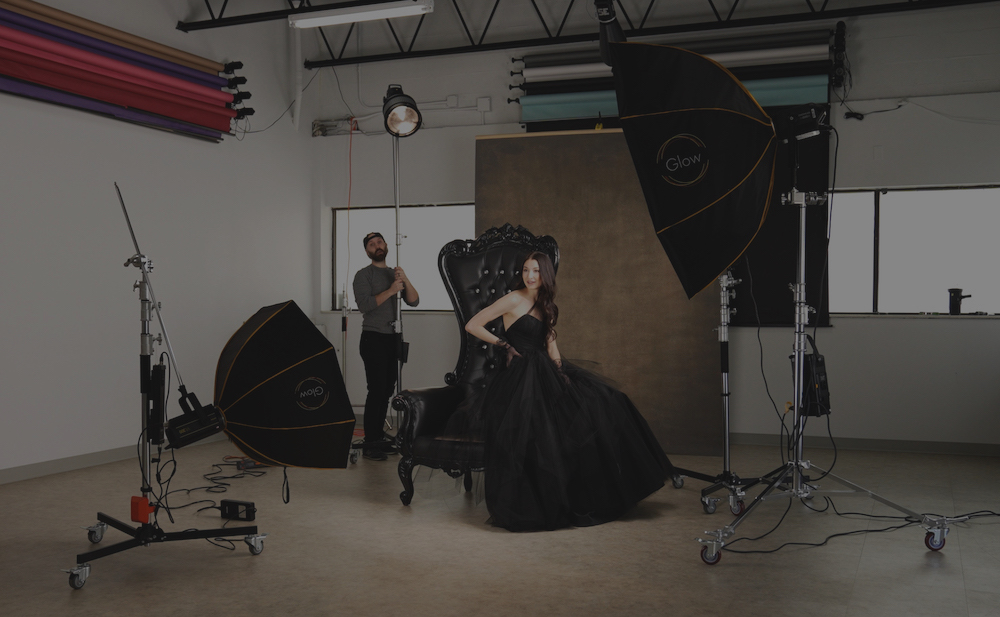Over the past five years, LED lighting has significantly increased in capability. LED has become a lot brighter, and added features such as BiColor and RGB. The price for a solid RGB panel has also come down quite a bit over that time. With that, many photographers are considering using LED as their lighting instead of flash. Today, I want to share the differences of using LED lighting instead of flash to create still images.
WYSIWYG
What you see is what you get. This acronym became popular with the rise of mirrorless camera systems, where the electronic viewfinder and LCD can show you how your camera settings will impact the ambient light in an image in real-time. This same concept is the biggest advantage of using LED lighting instead of flash. Because LED is a constant light, you can see the effects it will have on your subject as you modify, position, and control the light. This makes it easier to confirm the light source is illuminating exactly where you want, and creates the optimal quality of light.
Hybrid
Another benefit of LED is its application to both still photography and videos. With many photographers exploring video professionally and for social media, it makes sense that many want a light that can be used for both.
Not So Bright
A huge disadvantage of using LED instead of flash is that LED lighting is nowhere near as bright. Let’s get this common misconception out of the way: Watts do not equal watt-seconds. A 300 watt LED produces less than two percent of the brightness as a 300 watt-second flash pulse. This difference can affect the usability of LED in a number of ways.
Higher ISO Settings
With a flash system, you can often keep your camera at its base ISO for maximum image quality. LED may require you to increase your ISO setting on your camera. This increases the amount of noise visible in your images, and decreases dynamic range.
Slower Shutter Speeds
The brightness of flash is unaffected by your shutter speed, provided you are not using high-speed sync. LED is a constant light source — the longer your shutter speed, the brighter your image. This often forces you to choose between having an image be too dark, or risking motion blur if you are photographing a moving subject.
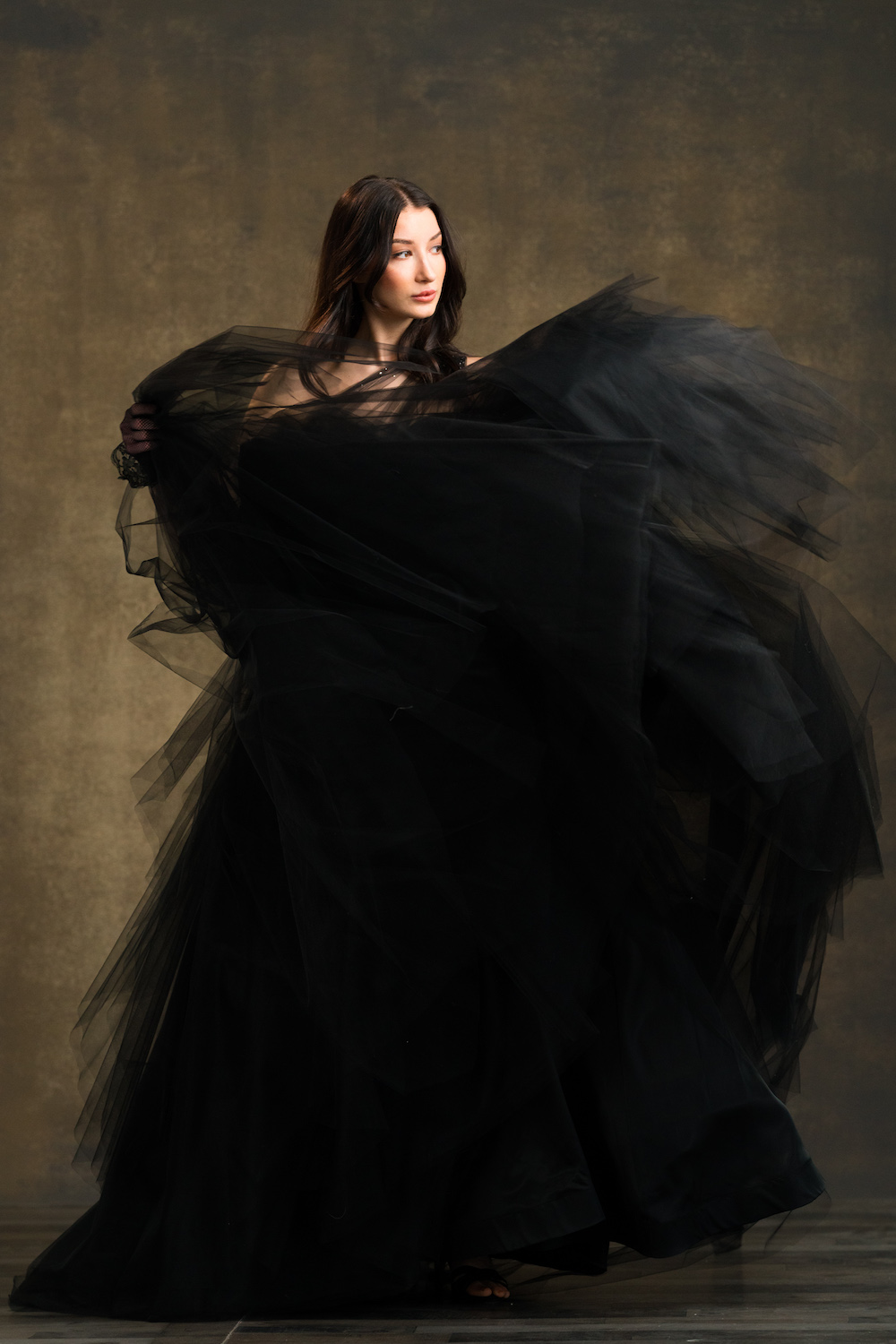
I was stuck in a hard spot here. Despite my 740w LED being at max power, I had a 1/800 shutter speed that was too slow to freeze the moving subject. ISO 1600 gave me grainier results than I desired. Also, I was only at F/3.5, which I typically like F/5.6 or higher in this scenario to increase detail in the background.
Wide Apertures
With flash, it’s relatively easy to access the full aperture range of your lens. This allows you to get your desired depth and detail. With LED, if you’re prioritizing your ISO or shutter speed, then your aperture will be restricted to the smallest F/stops.
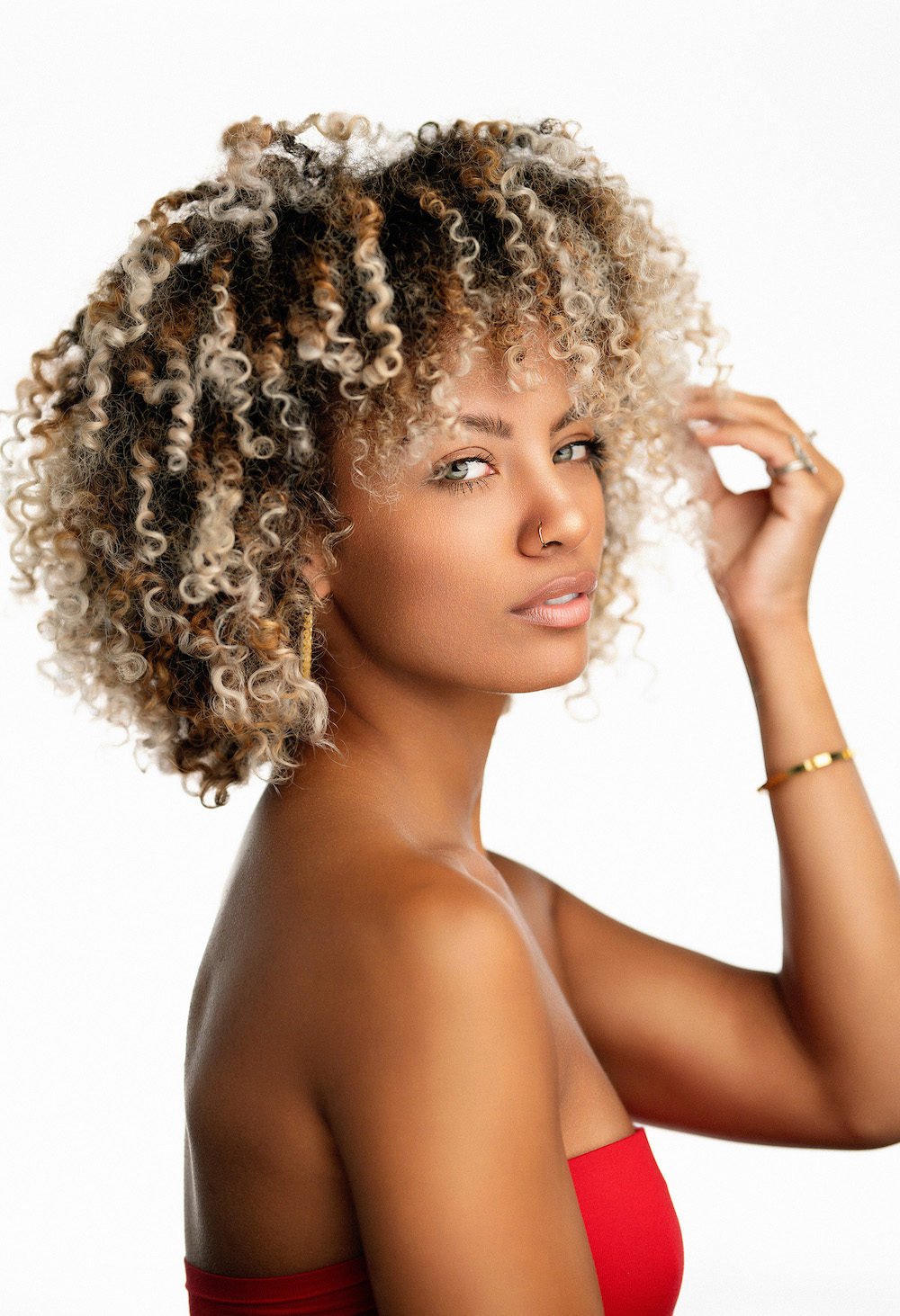
Keeping it Close
To mitigate the above restrictions, you have less freedom when it comes to choosing your LED’s position. This is especially true for soft light modifiers like softboxes, scrims, and umbrellas.
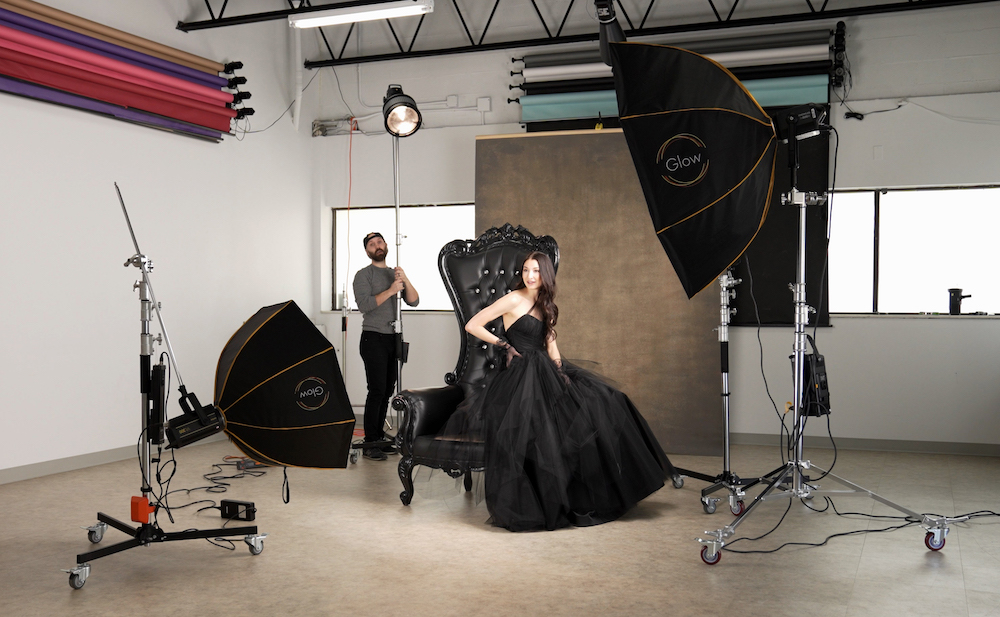
Bulky
In general, an LED will be much larger than a flash. For instance, a speedlight can produce more brightness in a still image than the Aputure 1200d LED. The average speedlight is around two pounds, while the Aputure 1200d is a 20-pound fixture that requires a 12-pound control box. If you don’t want to be chained to a wall or generator, you can add four two-pound V-mount batteries to that total. This all boils down to the fact that flash products only have to produce a burst of light for an extremely short period of time —whereas LEDs need to maintain their brightness for constant use.
Would you rather use 40 pounds or two pounds to light an image?
Lack of Separation
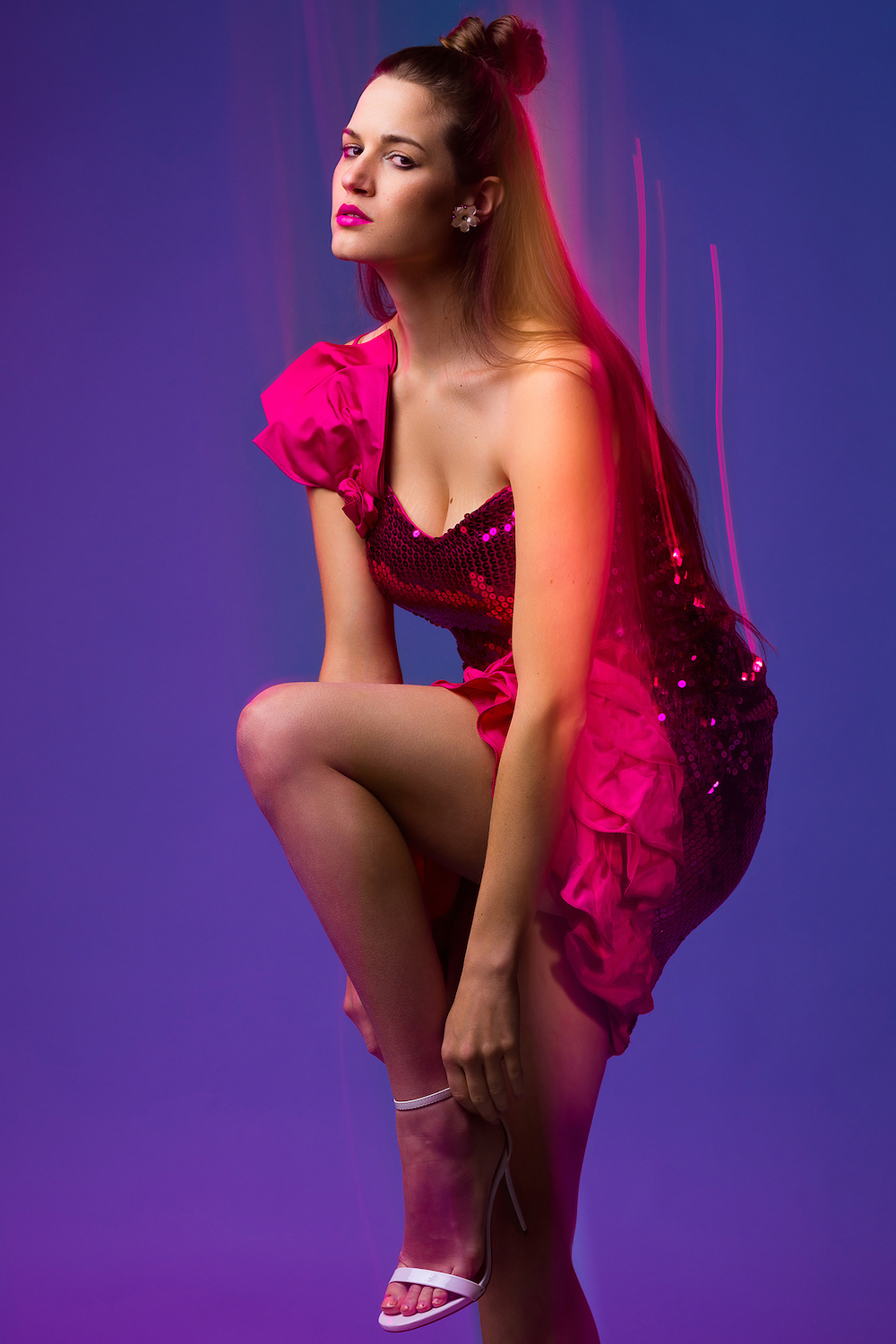
All of the above makes it clear that using LED instead of flash is more of a hassle, and more restrictive to your capabilities. However, none of this compares to the creative potential that you give up by using LED in flash.
Because LED is constant, it does not give you a “separation” from other constant light sources. This means any camera settings must apply to all the light sources equally.
On the other hand, a flash pulse happens in 1/200th of a second or less. This grants you the ability to independently control both the flash and the ambient light. So you can change the shutter speed to impact ambient light without influencing the effects of flash.
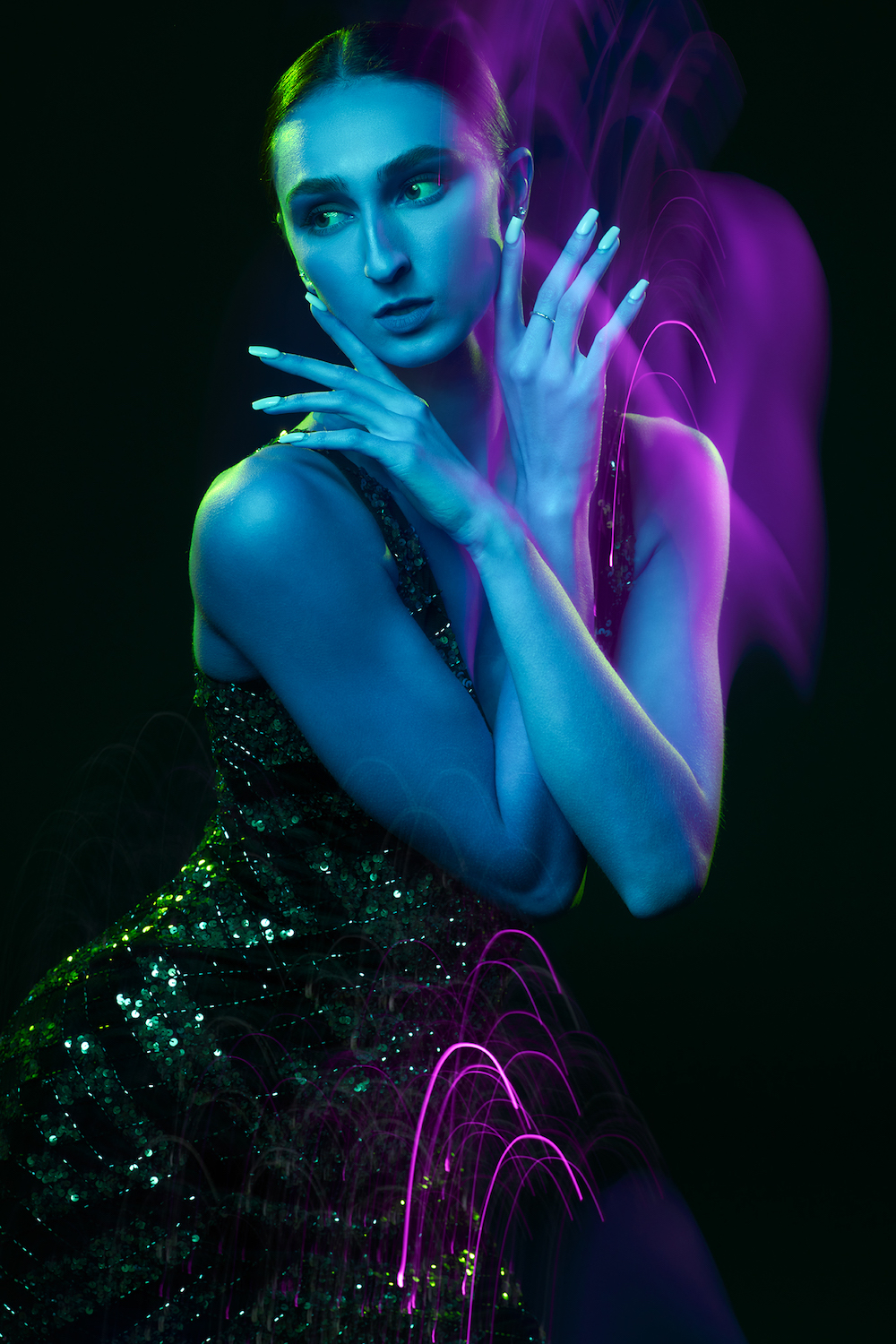
In the above image, the model is lit with multicolored flashes. There is also one colored constant light source. The images were captured at 1/6 second, F11, and ISO 100.
The shutter speed of 1/6 second paired with camera movement creates motion blur, whereas the rapid pulse of all the flashes freezes the subject.
This would be impossible to do with an all-constant light setup because there is no separation of how your light sources are impacted. If attempted with all LED, the result would purely be a blurry mess. And if you adjusted settings to freeze the subject with constant light, you would have no motion blur.
When is LED Good for Photography?
I think there are still a few areas of photography where the negatives of LED are diminished, such as still life and tabletop photography. Here, there is little need for light portability. Subjects and cameras are stationary to give more freedom to camera settings. Lastly, there is a requirement for lighting precision so the WYSIWYG factor is extremely beneficial.
Conclusion
Ultimately, choosing LED over flash introduces a lot of hassles, restrictions, and lost creative potential. Hybrid creators should heavily consider these negatives before going all in on LED. There is a slight middle-ground with Hybrid LED flash products like the Flashpoint FV200. While it still doesn’t have the action-freezing potential of a regular flash product, it gives back some level of separation by simulating a flash pulse with LED.
Article and Photos by Robert Hall

